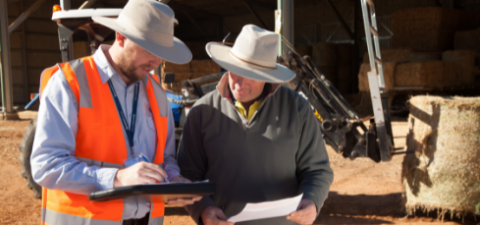Fire ants move quite slowly on their own, but people speed them up.
Our fire ant biosecurity zones help prevent the human-assisted spread of fire ants through the movement of materials that can carry fire ants.
On this page
Fire ant biosecurity zones interactive map
Type an address to find out if the property is in the fire ant biosecurity zones.
If any part of the property shares a boundary with one of these zones, the entire property is considered part of the zone.
Having issues using our interactive map or want to learn more about how the zones affect you?
View and download the fire ant biosecurity zone map.
Fire ant biosecurity zone changes
Queensland’s fire ant biosecurity zones are reviewed and updated monthly to align with the Interstate Plant Quarantine (IPQ) zones. The changes will reflect the latest fire ant detections and will help reduce the risk of human-assisted spread of fire ants.
The shift from regular reviews of the fire ant biosecurity zones to monthly aligns with our Fire Ant Response Plan 2023–2027. These changes will:
- reduce confusion regarding intrastate and interstate movement restrictions
- provide a more targeted approach to fire ant management. The new fire ant biosecurity zones will extend 5 km beyond known fire ant detections, rather than the biosecurity zones following suburb boundaries
- reduce restrictions on residents and businesses who are not at risk of moving a fire ant as they are well beyond 5 km from an infestation. Using suburb boundaries was appropriate when the infestation was predominantly in urban areas with smaller suburbs, but with the infestation now in rural areas including much larger suburbs, there are mismatches between the boundaries of the IPQ and fire ant biosecurity zones
- allow a more rapid response to control the spread of fire ants as biosecurity zones will be updated monthly.
What are fire ant biosecurity zones?
There are 2 fire ant biosecurity zones.
- Zone 1 covers suburbs that have received or are scheduled to receive fire ant eradication treatment.
- Zone 2 covers suburbs yet to receive eradication treatment.
New suburbs may be added to the zones each month, while others may change zones.
If you rely on software that uses suburbs to determine your location in relation to the fire ant biosecurity zones, consider using our interactive map.
New suburbs
Some suburbs are labelled as 'partial' because the entire suburb is not covered within our fire ant biosecurity zones.
If the address you are looking for is in one of these suburbs, we recommend using our interactive map at the top of the page.
This map will help you determine whether the address is situated outside or inside our biosecurity zones.
October 2024
- Adare (increased coverage)
- Lake Clarendon (move from partial to full suburb)
- Lefthand Branch (increased coverage)
- Moogerah (increased coverage)
- Mount Berryman (increased coverage)
- Mount Edwards (increased coverage)
- Rockside (increased coverage)
- Spring Creek (increased coverage)
- Thornton (increased coverage)
- Townson (increased coverage)
January 2025
- Grantham (partial suburb)
- Lower Tenthill (increased coverage)
- Ma Ma Creek (increased coverage)
- Placid Hills (increased coverage)
- Townson (increased coverage)
- Veradilla (partial suburb)
- Winwill (full suburb)
April 2025
- Adare (increased coverage)
- Cedarton (full suburb)
- Commission's Flat (partial suburb)
- Gatton (increased coverage)
- Ringwood (increased coverage)
- Stanmore (full suburb).
January 2025
- Beechmont (increased coverage)
- Witheren (full suburb)
February 2025
- Bridges (partial suburb)
- Cooloolabin (partial suburb)
- Eerwah Vale (partial suburb)
- Eumundi (partial suburb)
- Maroochy River (partial suburb)
- Ninderry (full suburb)
- North Arm (full suburb)
- Valdora (partial suburb)
- Verrierdale (partial suburb)
- Yandina (partial suburb)
- Yandina Creek (partial suburb)
April 2025
- Minjerrabah - North Stradbroke Island (increased coverage).
What does this mean for you?
Fire ant biosecurity zones apply to anyone who deals with materials that can carry fire ants, sourced from inside the zones. This includes such as soil, hay, mulch, manure, quarry products, turf, and potted plants.
This means that you must:
- check the fire ant biosecurity zones before moving these materials
- employ fire ant-safe practices when moving or disposing of organic materials within the fire ant biosecurity zones (Biosecurity Regulation 2016).
If you are unable to do so, you must apply for a biosecurity instrument permit.
Penalties can apply to individuals and businesses seen or reported doing the wrong thing. Noticed someone doing the wrong thing? Let us know by calling 132 ANT (13 22 68) or using our online form.


